Odaberite jezik:
ST oprema & Tehnologija D.O.O. (STET) has developed a novel, patentirani Elektrostatski pojas razdjelnik koji je pokazao reklamu-skali u obradi industrijskih minerala i recikliranje ugljena izgaranjem letećeg pepela.
Elektrostatski odjeljivanje tehnologija je ispitivan preko 100 godine. zapravo, prvi patentirani hranu koristiti Elektrostatski odvajanja žita middlings je podnesena u 1880. Tijeku istraživanja s tehnologijom pokazuje obećavajuće rezultate u kreiranju vrijednosti iz otpa nusproizvodi od trenutne proizvodne procese, kao što su biljne proizvodnje ulja ili životinjske (uključujući ribe) Obrada.
Simply put, the STET separator works based on differences in surface chemistry. In some cases, these separations would not be possible using particle size or density alone. STET’s separators take advantage of “Tribo-charging” (Vidi 1) which occurs rapidly within the equipment.
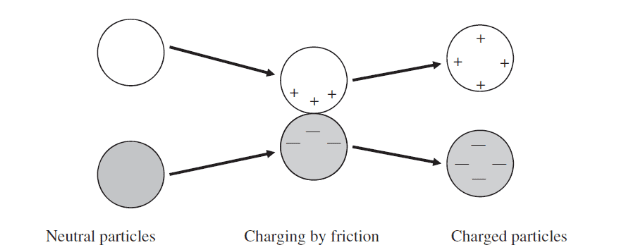
Slika 2 illustrates how particles are fed by one of several feed ports into the separation zone, which is the gap between horizontal electrodes (< 13Mm [0.5”]). Voltage (typically 12kV) is applied across this narrow gap to create a strong electric field. Particles are moved through this separation zone by a proprietary continuous loop, open mesh belt operating at high speed (4-20m/s [13-65ft/s]).
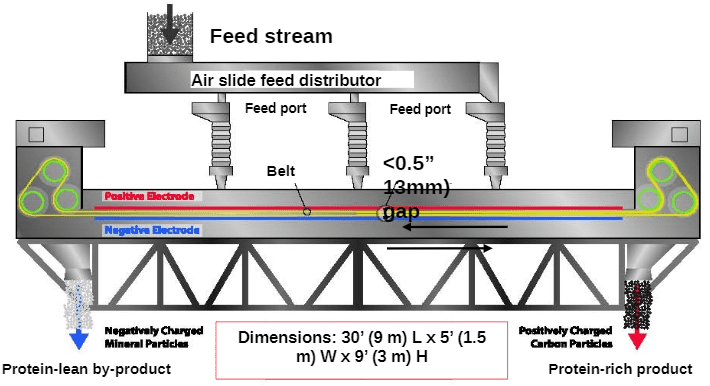
Within the separation zone, the proprietary design of the rapidly moving continuous belt performs several functions simultaneously (Slika 3).
It creates a high turbulence zone between the electrodes, promovirajući tribo-punjenje. This results from repeated particle-to-particle collisions, keeping materials charged within the separator and eliminating the need for an outside pre-charging system. Lastly, the movement of the belt sweeps fine particles from electrodes, maintaining their performance, and facilitates separate product and by-product collection.
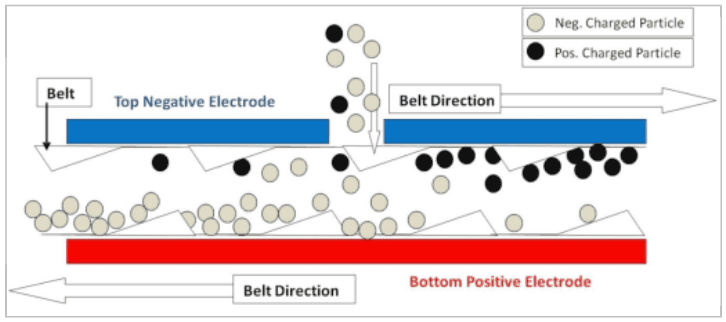
The STET tribo-electrostatic belt separator has shown the ability to “beneficiate” (improve the properties of) a variety of minerals and fly ash around the globe and has demonstrated application for the processing of a growing number of food and feed materials.
One example of this is with the processing of Whitefish Meal which was commercially obtained, milled, and tested through our pilot-scale separator pictured in Figure 4.
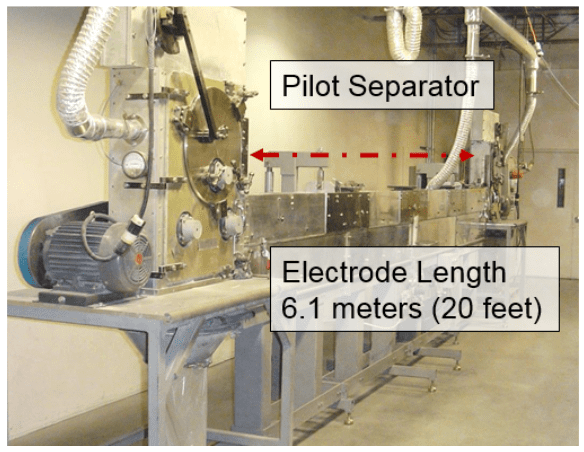
Rezultati
The pilot tests were conducted on 2 tonnes of commercially acquired Whitefish Meal that were milled prior to processing through our tribo-electrostatic separator. Results for Whitefish Meal indicate protein enrichment and significant reduction of ash in a single pass, as shown here.
| Pilot plant results | |||
|---|---|---|---|
| Hraniti | E1 | E2 | |
| Mass yield | 39.3% | 60.7% | |
| Moisture | 2.5% | ||
| Pepeo | 12% | 6.1% | 15.2% |
| Protein | 81.1% | 89.8% | 77.6% |
The information on the following page relates product grade (as deter-mined by protein wt. %) to mass yield.
It can be noted from these data that there is a trade-off between the two parameters. Međutim, we were able to achieve a 10% (relative) increase in protein and very nearly 50% ash reduction in the product stream in a single pass, and without further optimization.
Feed material particle size was adjusted by processing in a hammermill to the size shown on the next page.
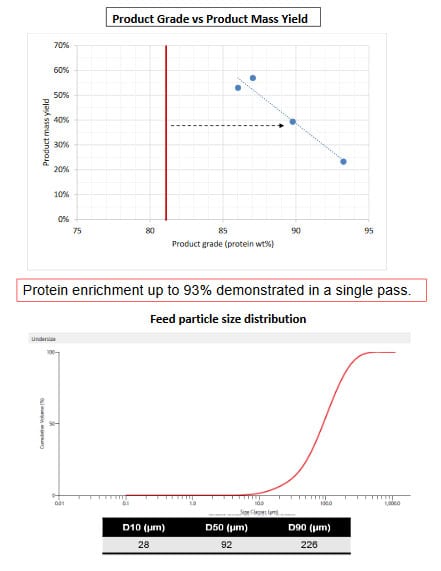
STET’s separators are capable of throughputs for most food and feed materials of about 10-15 MT per hour (depending on density) yet consume only 3-4 kWh of electricity. The process allows separations to be water and chemical free, with no need for thermal input and no waste stream generated.
This separation method can result in the production of high volume, high quality fish protein as an ingredient in feed formulations from seafood processing waste.
This by-product of fish processing shows promise in providing valuable protein and minerals to companion or commercial animals, helping to support the growing demand for dietary protein driven by population growth.